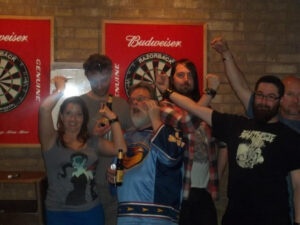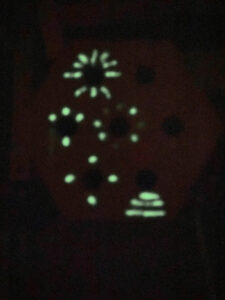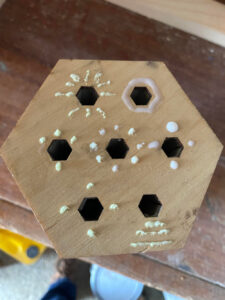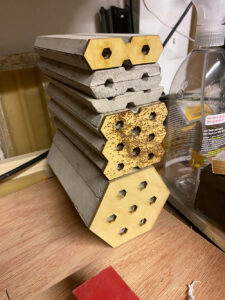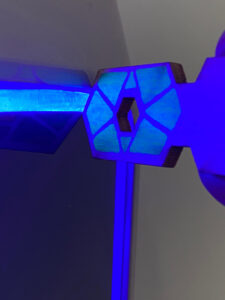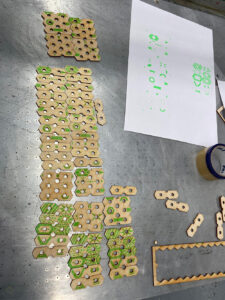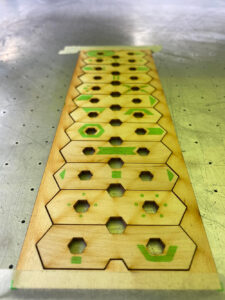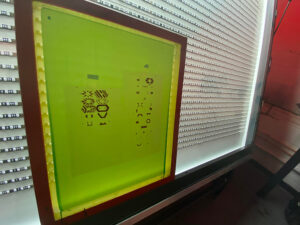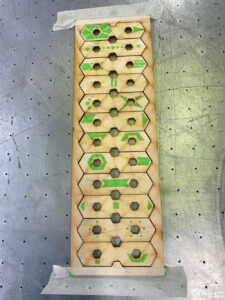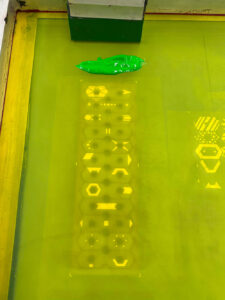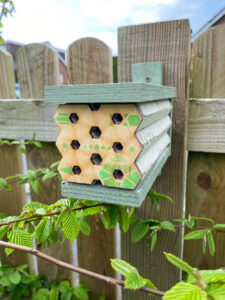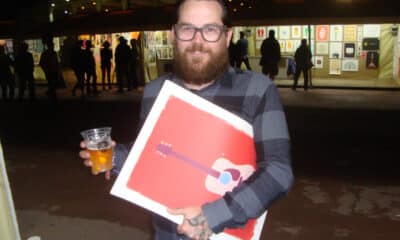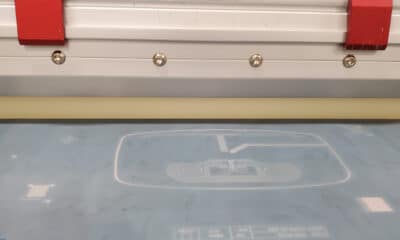WHILE THOUSANDS OF loyal readers plod through their day at Ye Olde Silkscreen Shop producing T-shirts, posters, automotive parts, or electronics, some take a left turn and end up printing so-called “weird shit.” Our guest on Episode 16 of “Art, Ad, or Alchemy?” qualifies as one of those people. Nick Rhodes is the name. Saving bees is the game. Screen printing gets (some of) the blame.
Nick’s story illuminates why it could be a mistake for anyone (particularly North American politicians, educational institutions, and trade associations) to essentially write off screen printing for anything other than decorating apparel. In this case, print – in a few different forms, not just screen – is a potential solution to yet another 21st-century problem created by humans: declining bee populations. (Potentially solving this problem with a humanoid printer rather than AI makes the prospect even sweeter.)
I met Nick more than a decade ago at Flatstock Austin, where we produced a demo print before teaming up to defeat the Americans at darts. (Was it luck, skill, or too much Lonestar? Probably all three. Good times with the Commonwealth Dart Team!) The podcast connects the dots from Nick’s life as an English rock poster designer and screen printer (switchopen.com) to the University of Central Lancashire, where he now works as a lecturer and technician. Here, we’ll get straight to the buzz on bees – specifically, how screen printing could help strengthen mason bee populations in the UK and beyond.
Not as famous as the honey bee or the killer bee, the mason bee is four times as prolific a pollinator. (I’m not going to explain why pollinating bees are important to life on earth, so you can either trust me or do your own research.) Mason bees get their name from building their tube nests using mud in brickwork, cracks in rock, or other small hollow things in nature or urban environments. They don’t live with hundreds of others – there are no worker bees. There’s just mom, dad, and a bunch of babies stuffed in a tube. Unfortunately, with most modern buildings being constructed with sealed outer surfaces and less brickwork, these traditional nests are disappearing.
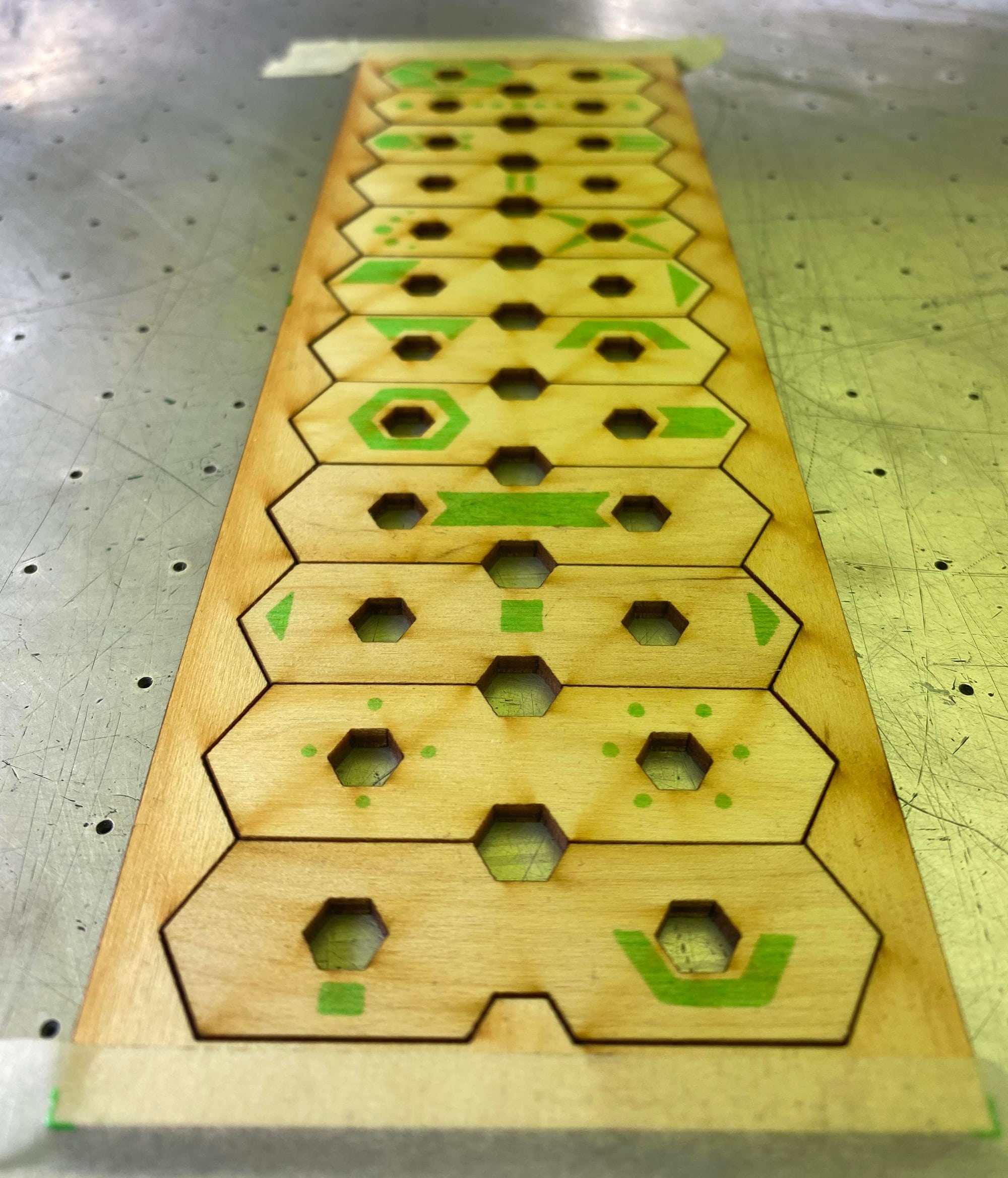 Rhodes’ experiments involve screen printing onto faceplates, which are then laser cut into shapes for the fronts of the bees’ hexagonal tube homes.
Rhodes’ experiments involve screen printing onto faceplates, which are then laser cut into shapes for the fronts of the bees’ hexagonal tube homes.
Nick’s work has two components. The first is designing and 3D-printing prototype housing tunnels, which incorporate a special hex shape and can be opened and cleaned to be used again. The second is using screen printing to decorate the entrances with a combination of graphic shapes and patterns. Different materials produce different signals and reflections of color, some of which are more attractive to the bees than others. The idea is to determine what works best and make it easier for them to find a home. Who needs a house number when you’ve got a dayglow sunrise marking the entrance?
Nick uses screen printing for the same reason manufacturers in other countries use the process for electronics, alternative energy components, and consumer products. Anything we can grind up and liquify, we can print – in any shape, in differing thicknesses, and on most materials. We can mix it up quickly, fail fast, modify, and prototype without spending days re-engineering the press.
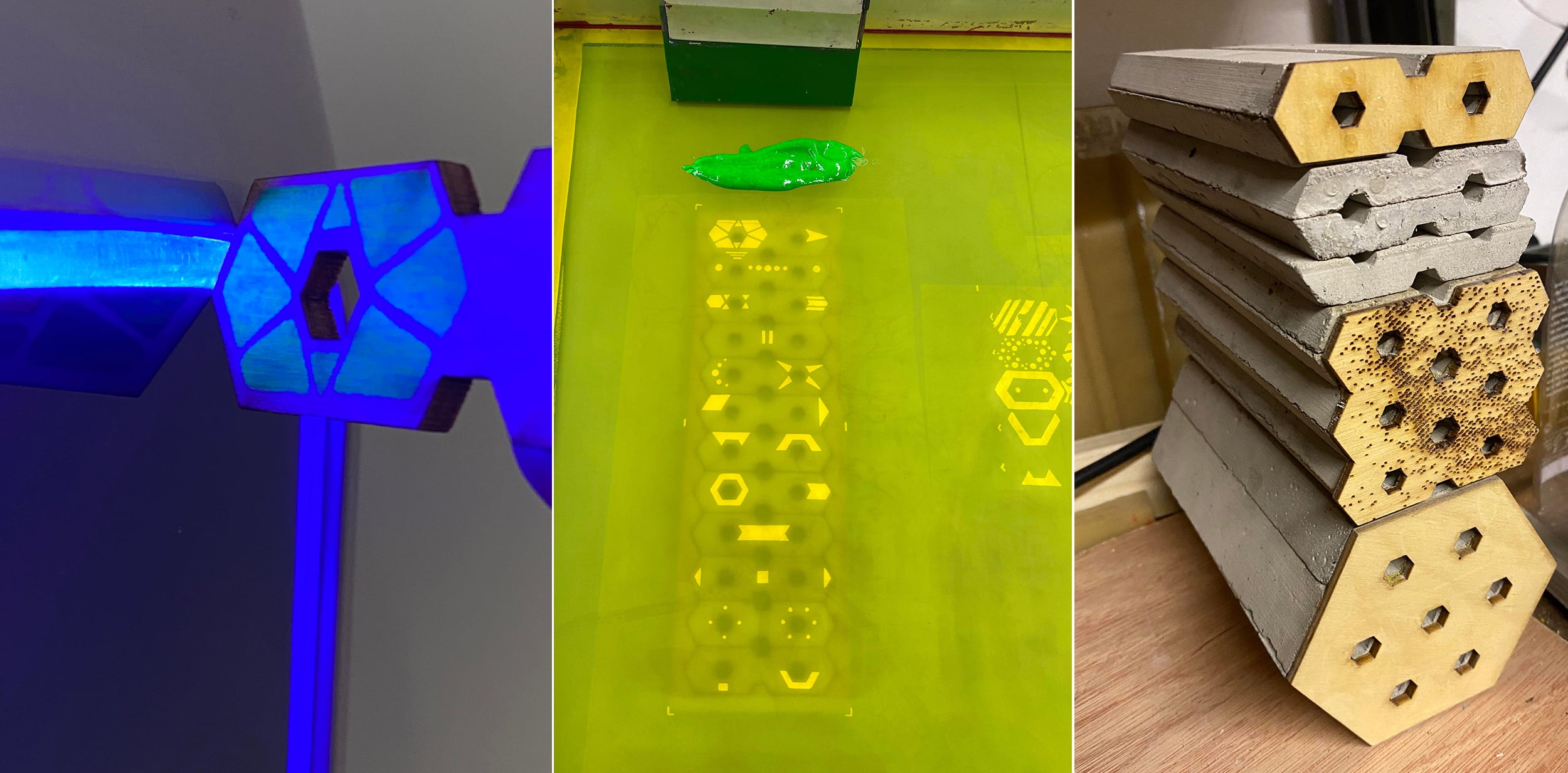 UV-reactive inks in different patterns may attract bees to light wavelengths invisible to humans. Inks run the gamut from regular to flourescent to glow in the dark.
UV-reactive inks in different patterns may attract bees to light wavelengths invisible to humans. Inks run the gamut from regular to flourescent to glow in the dark.
By combining 3D printing to make variations on the home cell, laser technology to cut the faceplates, and screen printing to print an array of patterns in different materials (fluorescent, phosphorescent, UV reactive, and regular inks in a rainbow of colors), Nick made a range of different research models. They’re now placed strategically around his home in Penwortham and further afield. (In case you were wondering, Penwortham is a town in South Ribble, Lancashire, on the south bank of the River Ribble facing the city of Preston. If that sounds English, it is.)
During the initial stages of his quest, Nick contacted many bee experts. None are doing any research in this specific area. However, many were intrigued by this potential new way to boost bee numbers worldwide. If Nick’s found something – if the right printed patterns can attract bees to manufactured happy homes – you can say you heard about it in Screen Printing magazine first and brag to your friends, “screen printing did that!”
Listen to Episode 16 of “Art, Ad, or Alchemy?” with Nick for more on bees and screen printing.
PHOTO GALLERY (11 IMAGES)
Advertisement
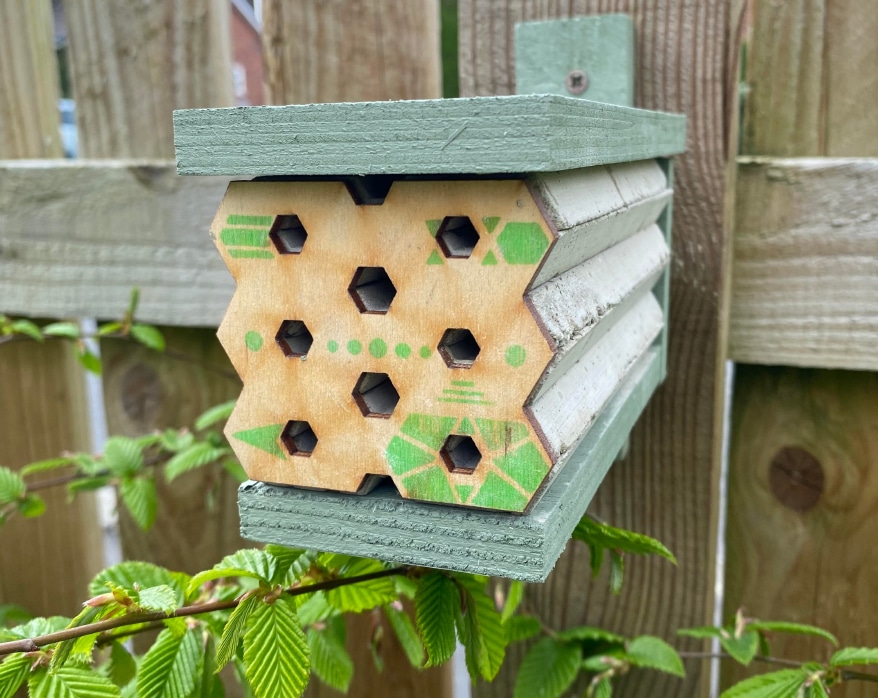

 Case Studies2 months ago
Case Studies2 months ago
 Art, Ad, or Alchemy2 months ago
Art, Ad, or Alchemy2 months ago
 Andy MacDougall2 months ago
Andy MacDougall2 months ago
 Columns4 weeks ago
Columns4 weeks ago
 Editor's Note3 weeks ago
Editor's Note3 weeks ago
 Marshall Atkinson3 weeks ago
Marshall Atkinson3 weeks ago
 Case Studies4 weeks ago
Case Studies4 weeks ago
 News & Trends2 months ago
News & Trends2 months ago

 Rhodes’ experiments involve screen printing onto faceplates, which are then laser cut into shapes for the fronts of the bees’ hexagonal tube homes.
Rhodes’ experiments involve screen printing onto faceplates, which are then laser cut into shapes for the fronts of the bees’ hexagonal tube homes. UV-reactive inks in different patterns may attract bees to light wavelengths invisible to humans. Inks run the gamut from regular to flourescent to glow in the dark.
UV-reactive inks in different patterns may attract bees to light wavelengths invisible to humans. Inks run the gamut from regular to flourescent to glow in the dark.